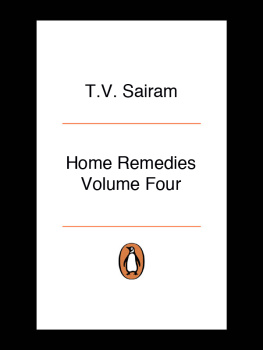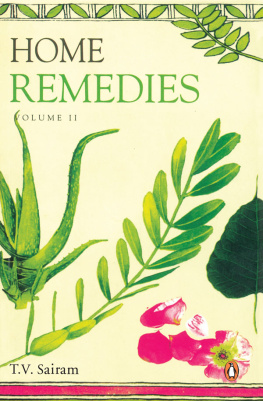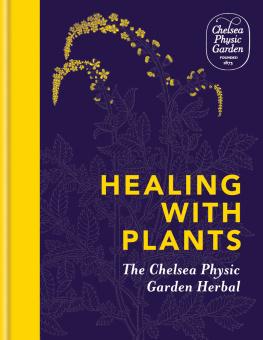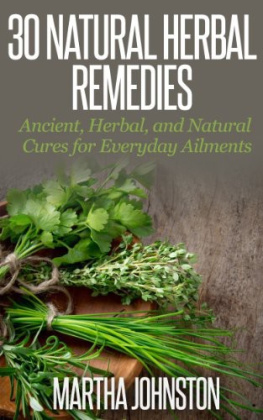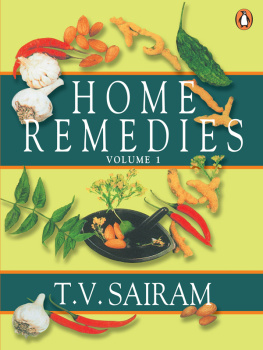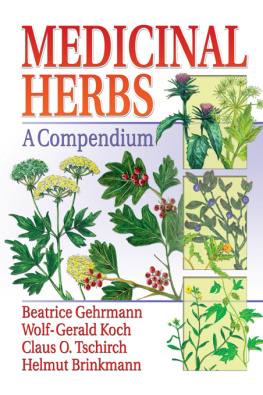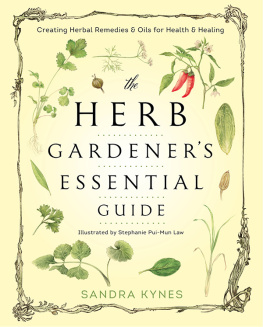The book presents the material related to 40 common medicinal plants... in a very lucid manner... The most useful part of the book is that it provides notes on preparation of herbal medicine, dosage and some thumb rules for the selection of the various parts of the medicinal plant.... An interesting bibliography also accompanies the book... a complete guide on medicinal herbs. It caters to the need of both the common man and a practitioner alike.
The author meticulously documents many parallel traditions and their uses of individual plants to cure and comfort an illuminating rediscovery of herbs
A glossary of English medical terms and the Indian names of the herbs in quite a few regional languages does prove helpful.
A very useful book.
Years of research on ancient herblore by TV. Sairam is slowly but surely taking the shape of easy-to-use volumes on the medicinal values of the phenomenal wealth the country has in herbs...
An excellent and informative book.
To say that this book is a good value for your money would be an understatement every household should have it. Youll never stop thumbing through it.
A most handy book to have about the house.
Highly informative and well-researched series it makes for delightful reading and is a must for you collection.
Preface
Systematic research in various systems of Indian medicine under the patronage of the Government of India commenced in the year 1969 with the establishment of the Central Council for Research in Indian Medicine and Homoeopathy (CCRIMH). In 1978, this body was split into four separate research councils: one each for Ayurveda and Siddha, Unani medicine, Homoeopathy, and Yoga and Naturopathy.
A recent WHO estimate reveals that around 80 per cent of the global population consume phyto-medicines, and documents a shift in emphasis from the underdeveloped to the developed countries of the world. This trend has both positive and negative fallouts in society. While the prices of useful herbs skyrocket in the developing world as their main sources are depleted, the rural poor who have long been dependent on them find them unaffordable when compared to synthetic drugs and medicines. Even in the remote corners of rural and tribal India, we notice that branded synthetic medicines manufactured by multinational concerns have begun to percolate.
A survey conducted by researchers at the Beth Israel Deaconess Medical Centre and the Harvard Medical School in Boston reveals that the use of herbal medicines and other alternative therapies has shown a steep rise in the United States, with sales of herbal remedies increasing by 380 per cent during the nineties. The number of visits made by American patients to herbalists, chiropractors and other purveyors of alternative medicine is reported to exceed the total visits to all primary-care physicians.
The trend indicates the changing attitudes in modern society in general with regard to complementary and alternative systems of medicine.
A comparative study of ethno-botanical information contained in ancient Indian literature with folk medical lore, research amongst tribal communities and current scientific findings can go a long way in establishing the direction of future medical exploration.
The recent publication of the Indian Herbal Pharmacopoeia is a giant leap in this direction; some herbs have been standardized and twenty herbs have had monographs devoted to them. No doubt much work remains to be done. In order to obtain consistent results, the standardization of the product has to be monitored right from the raw-material stage. The habitat of the plant and the time of collection play a vital role in achieving consistency.
Although there have been attempts at a broader understanding of drugs based on their chemistry and pharmacology, India can perhaps follow China, where experimental results are immediately passed on to clinical investigators, who provide the necessary support in the clinical evaluation of particular drugs.
The Indian subcontinent contains about 25,000 species of vascular plants, of which 7500 are used by folk and other traditional systems of medicine. Many plants are common to all the traditional systems. Several are used either alone or in combination with other plants. The current regulations state that if these drugs are prepared in exactly the same way as laid down in ancient literature and if they are preserved as detailed by the texts, such drugs do not require either approval or registration. The drug will however be treated as new whenever a different method of preparation is used.
The subcontinent occupies a unique position in the world, capable of cultivating most of the medicinal plants used both in modern as well as traditional systems of medicine.
While India has to travel a long way to become self-sufficient in pharmaceutical production, the largest chunk of medicinesalmost 70 per centdraw on the indigenous systems of medicine catering to the needs of most of our rural people.
The export value of crude drugs from India in the international market has increased 2.76 times between 198586 and 199495, and now stands at Rs 53.2 million.
Although India is one of the major suppliers of medicinal plants to the world, the export of value-added materials such as plant derivatives, chemicals, etc. is insignificant compared to the developed countries.
According to an UNIDO study, although there were 3349 units licensed to manufacture plant-based pharmaceuticals in 1987, their contribution to the total production was considered marginal.
A systematic survey of all medicinal flora is the need of the hour. While that may safely be left to dedicated researchers, this book is my attempt to contribute by documenting and making available to a larger public what I have seen practised in the course of my researches.
This fourth volume of Home Remedies follows on from where the first three had left off , hoping to reclaim a place on our kitchen shelves and in our lives for plants we have come to dismiss lightly.
Introduction
For cutting off the tender sprouts, a fine of six panas will be imposed; for cutting off the minor branches, twelve panas and for cutting off the big branches, twenty-four panas. Cutting off the trunk will be punished with the first amercement; and felling will be punished with the middlemost amercement.
Arthashastra, III 19:197
The writing of this book was undertaken to fill what I perceive to be a serious void between the ethnic discovery of herbs and their scientific rediscovery.

